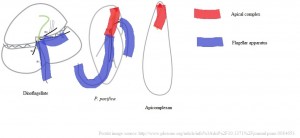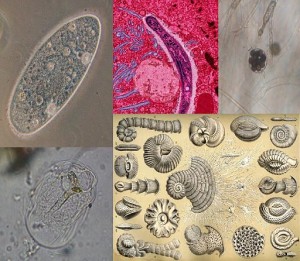The mystery of our origins has always been a lifelong question even before the development of science. That development led to the theory of evolution and the debate of how humans and chimps have a common ancestor has been ongoing ever since. Not only that, it also led to many disputes and evolutionary questions between other lineages as humans have an innate curiosity of how things relate to one another.
As each lineage has things unique to them, our researcher became very interested in one particular group known as protists.
In today’s age, protist plays a role both positively and negatively, as the group covers a very wide spectrum. On the negative side, they are the reason for diseases such as malaria, with an estimated 207 million cases and 675,000 deaths in 2012 alone. Protist are also responsible for causing 3 billion dollars of loss per year in the poultry industry. Although protists do play an important role in other areas, such as acting as a primary food producer, their negative traits cause protist to be a very relevant issue in this day and age.
We met with Dr. Noriko Okamoto of UBC, who was able to find an organism called Psamoosa pacifica that contained the unique trait of two different groups of protist, known as dinoflagellates and apicomplexans, and was able to deduce that these two different groups shared a common ancestor through the use of serial Transmission Electron Microscopy (TEM) tomography, which allowed her to create many thin slices of the newly found organism and create a 3D image of its structure to compare.

Highlighted images of the structures of apicompexan, dinoflagellate, and Psammosa pacifica
Source of the images used: http://www.plosone.org/article/info%3Adoi%2F10.1371%2Fjournal.pone.0084653
For a crash course lesson on dinoflagellates and apicomplexans, listen to the following podcast below:
Audio clip: Adobe Flash Player (version 9 or above) is required to play this audio clip. Download the latest version here. You also need to have JavaScript enabled in your browser.
Thus, her research was able to answer a long-standing evolutionary question of how apicomplexans and dinoflagellates are related to each other and their origin.This study may lead to answers about how the protists are related and help build on the knowledge of ancestries we currently have.
This video talks about the implications of her research as it delves into how it impacts both the general public and other scientific fields:
While finding a common ancestor between organisms may seem like a mere curiosity in action, it has the potential to help the humanity. As an example, the scientists were able to find a lead on when and the origin of the HIV-1 virus by finding the ancestral codes in HIV-1 virus that codes for AIDS. Likewise, while even our researcher is not very clear on how beneficial this information may be to the scientists in other fields, they will surely find uses for it when the time comes as her study provides brand new knowledge in molecular levels.
I hope this blog post has raised some awareness on protists and the importance of finding a common ancestor.
-By Jong Hwan Seo, Jeffrey Chen, Hyunbin Park, and Yuri Tomura (Group 2)


